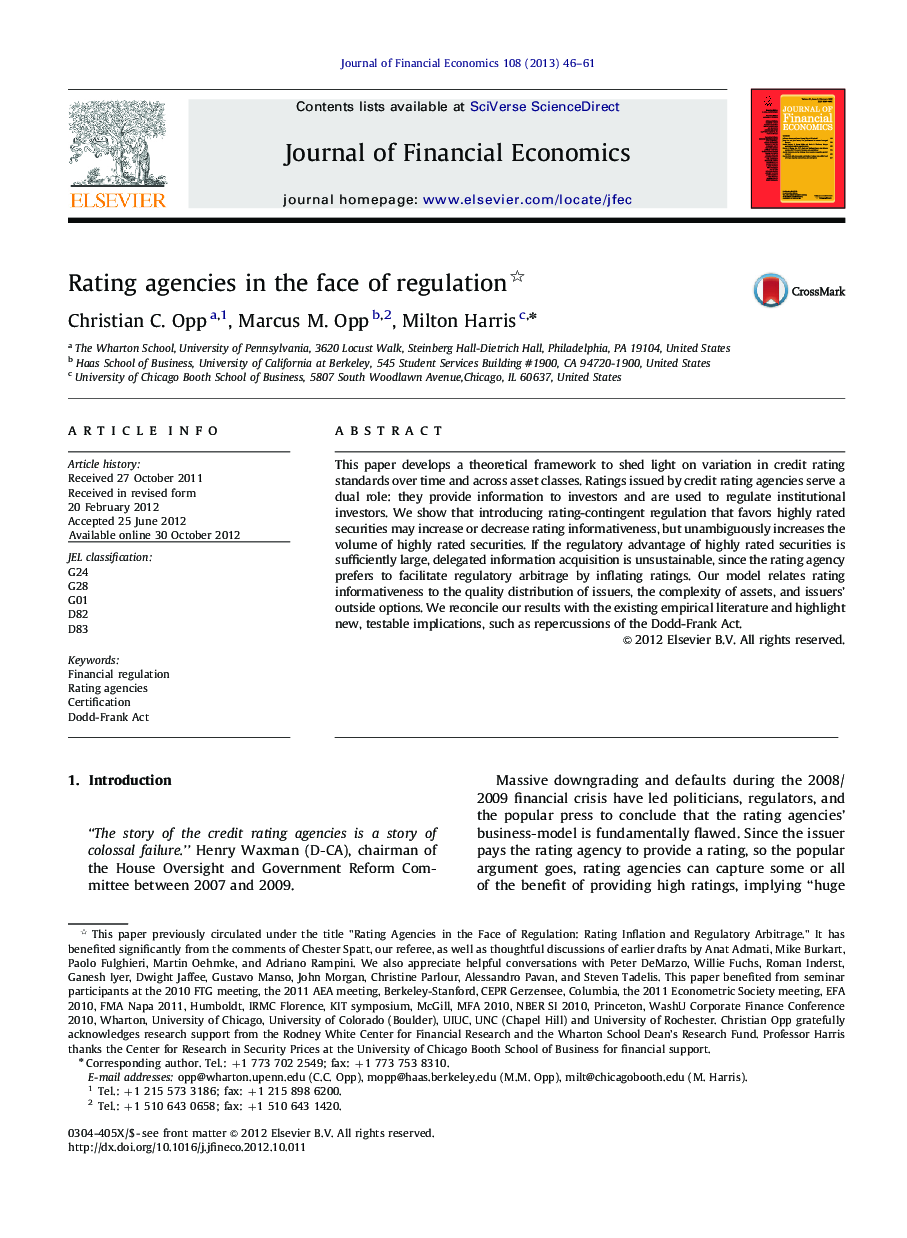| Article ID | Journal | Published Year | Pages | File Type |
|---|---|---|---|---|
| 959500 | Journal of Financial Economics | 2013 | 16 Pages |
This paper develops a theoretical framework to shed light on variation in credit rating standards over time and across asset classes. Ratings issued by credit rating agencies serve a dual role: they provide information to investors and are used to regulate institutional investors. We show that introducing rating-contingent regulation that favors highly rated securities may increase or decrease rating informativeness, but unambiguously increases the volume of highly rated securities. If the regulatory advantage of highly rated securities is sufficiently large, delegated information acquisition is unsustainable, since the rating agency prefers to facilitate regulatory arbitrage by inflating ratings. Our model relates rating informativeness to the quality distribution of issuers, the complexity of assets, and issuers' outside options. We reconcile our results with the existing empirical literature and highlight new, testable implications, such as repercussions of the Dodd-Frank Act.
